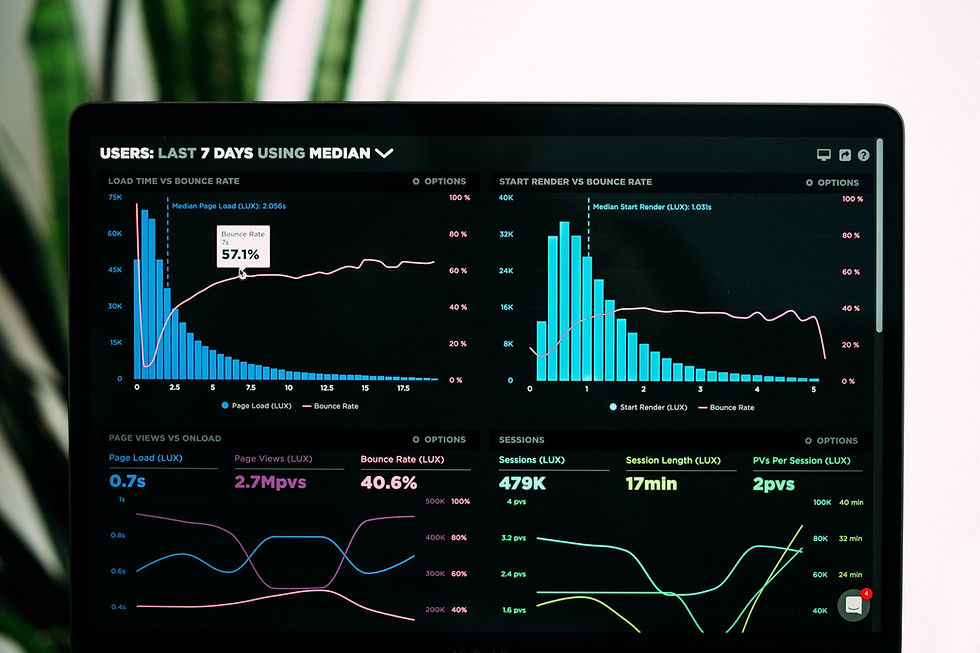Best Synthetic Data Generation Tools
- Brainz Magazine

- Apr 30
- 4 min read
Let's be realistic here—a couple of decades in the software industry, and I've watched data grow from basic relational tables to seas of sensitive, regulation-ridden, frequently incomplete messes. And every time we've tried to test, train, or analyze something in size, we've run into the same roadblock: "real data is hard."Privacy regulations, expense, and access hurdles render handling the "real deal" increasingly unrealistic.

Enter synthetic data—not as a patch, but as a better, safer, and sometimes even improved alternative. Algorithmic, and designed to mimic the patterns found in real-world data without revealing any confidential information, synthetic data is increasingly becoming indispensable to devs, data scientists, researchers, and testers.
So, what sets an exceptional synthetic data tool apart? Let's break that down before we examine the top players.
What Makes a Great Synthetic Data Tool?
I've tested all kinds of tools. This is what distinguishes the wheat from the chaff in synthetic data platforms:
• Realistic Sentiment: The simulated data needs to match the distributions, idiosyncrasies, and edge cases of real data sets
.• Scalability: Can support enormous amounts with ease and not struggle.
• Multi-Modality Support: Whether the data is tabular, text, time series, or image data—nothing should be excluded.
• Customizability: You ought to be able to adjust, tune, and shape the data to your testing or training purposes without having to write a lot of code.
Now, onto the good stuff. These are my best synthetic data generation tools—battle-hardened, highly-regarded, and up to any challenge you care to send their way.
1. K2view K2view is not only one tool—it’s an entire data operations platform. It’s a powerful standalone product in which you can invest if you are in an enterprise space where performance, security, and flexibility are not optional.
K2view incorporates AI-driven synthetic data generation with self-service PII masking and test data governance. And what sets it apart is its rule-based engine that allows automatic generation of data across anything from functional testing to worst-case stress testing.
And if you train large language models (LLMs)? K2view has synthetic data pipelines for those as well. Not surprising that they gained a "Visionary" badge in Gartner's 2024 Magic Quadrant for Data Integration.
2. MOSTLY AI MOSTLY AI leverages deep learning to produce synthetic data that captures the statistical substance of your source dataset—without leaking confidential information. It excels in regulated industries such as finance, healthcare, and telecom.
What sets it apart is how it balances ease of use with robust privacy assurances. It is easy to integrate into current data workflows so that adding it in will not require revamping your technology stack.
3. YData Fabric If you are training machine learning models and your data is like Swiss cheese—filled with holes and bias—YData Fabric will fill in the blanks with intelligence. It doesn't merely create additional data; it improves data.
By handling missing values, imbalanced classes, and fairness concerns, YData keeps your models not only performing optimally—but also doing so in a responsible manner. Your AI ethics team will thank you, trust me.
4. Synthea Synthea is open source, totally free, and laser-beam focused on healthcare. It mimics end-to-end patient paths—from birth through diagnosis to treatment and outcomes—using real-world clinical guidelines.
Synthea is like a dream come true for health app developers, public health researchers, and medical AI teams. And because it produces no actual patient data, you are free to work with no HIPAA worries.
5. Synthetic Data Vault (SDV) Developed by MIT's Data to AI Lab, SDV is both highly customizable and free and open source. Dev or data science experts with a need for fine-grained control will love it.
It works with relational databases, time series, and single tables beautifully. You'll have to roll up your sleeves somewhat—it is not plug-and-play—but those who enjoy tinkering will love the enterprise-class power without the enterprise cost.
6. Tonic Tonic converts your production data into realistic replicas that are safe to use in the testing environment. QA teams and developers love it because it provides real-feeling data without the real-world danger.
Its actual strength? Integration. It fits in with your CI/CD pipelines and current dev tools like it was intended all along. Whether or not you're executing automated tests or handling microservices, this tool gets it.
7. Gretel Text data is notoriously difficult to anonymize and synthesize. Gretel gets it right. Whether you are handling natural language, tabular data, or time-series data, Gretel models produce excellent synthetic replicas with ease. It's actually most powerful in its developer-friendly APIs—if you spend most of your day in Swagger or Postman, Gretel will be second nature. Ideal for teams that are developing AI-powered apps that require secure text data to train on.
Final Thoughts
Data is no longer optional—it's necessary. It leaves systems flexible, helps AI be more equitable, accelerates testing, and avoids compliance nightmares associated with real-world data. And these tools? They're not supporting actors—they're reshaping how we're building, testing, and shipping software. If you're still bogged down with wrangling legacy data sets, it's time to rethink your mindset—and your toolset. Synthetic data is not only here, it's powerful, and it's ready to catapult your next project to the next level. Do you have a go-to tool I didn’t list? I’d really like to hear what is helping you.









